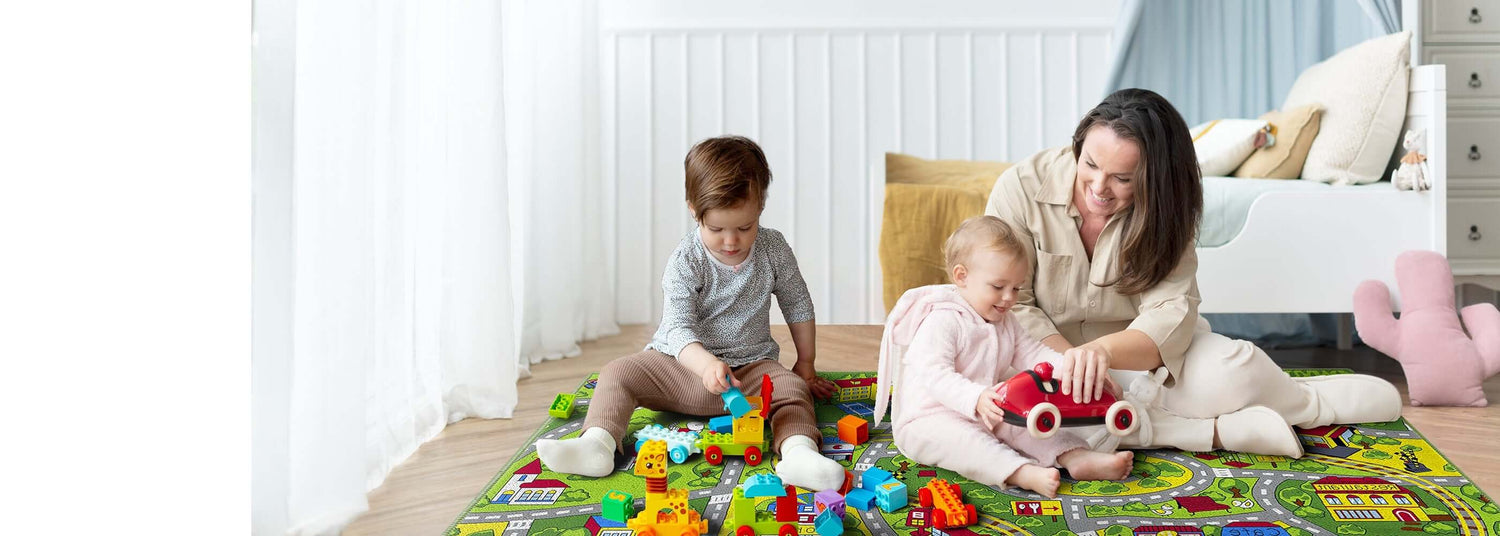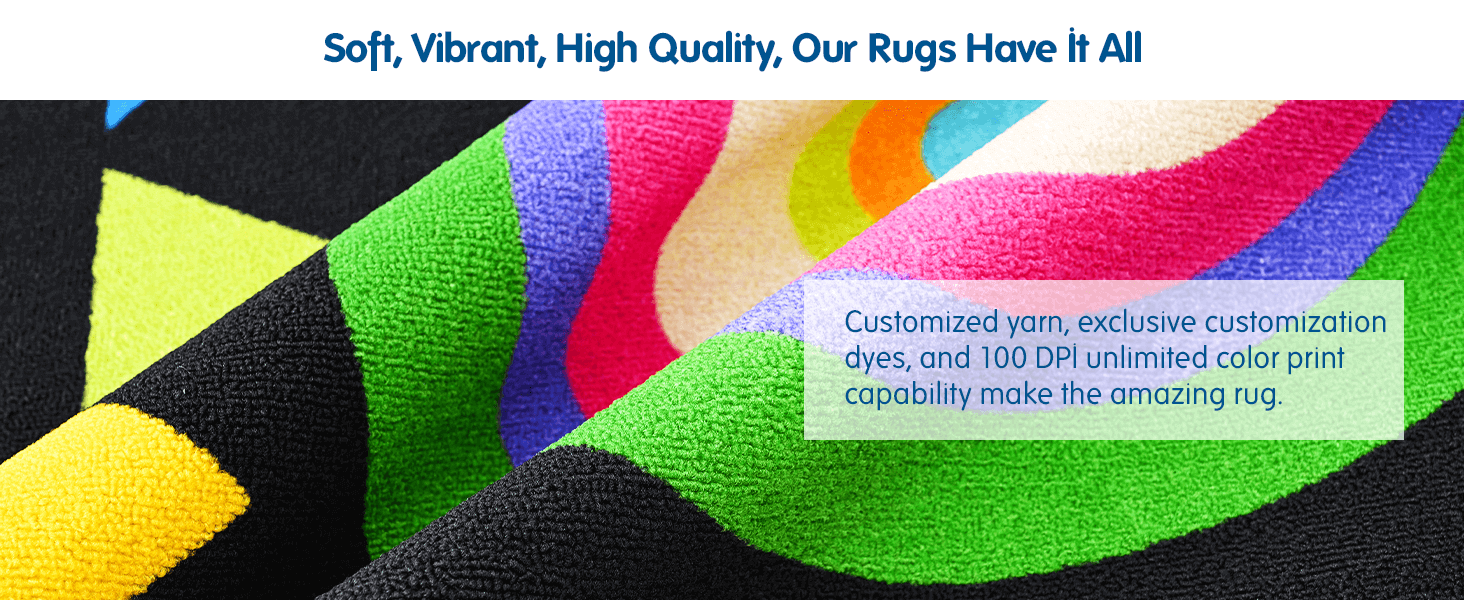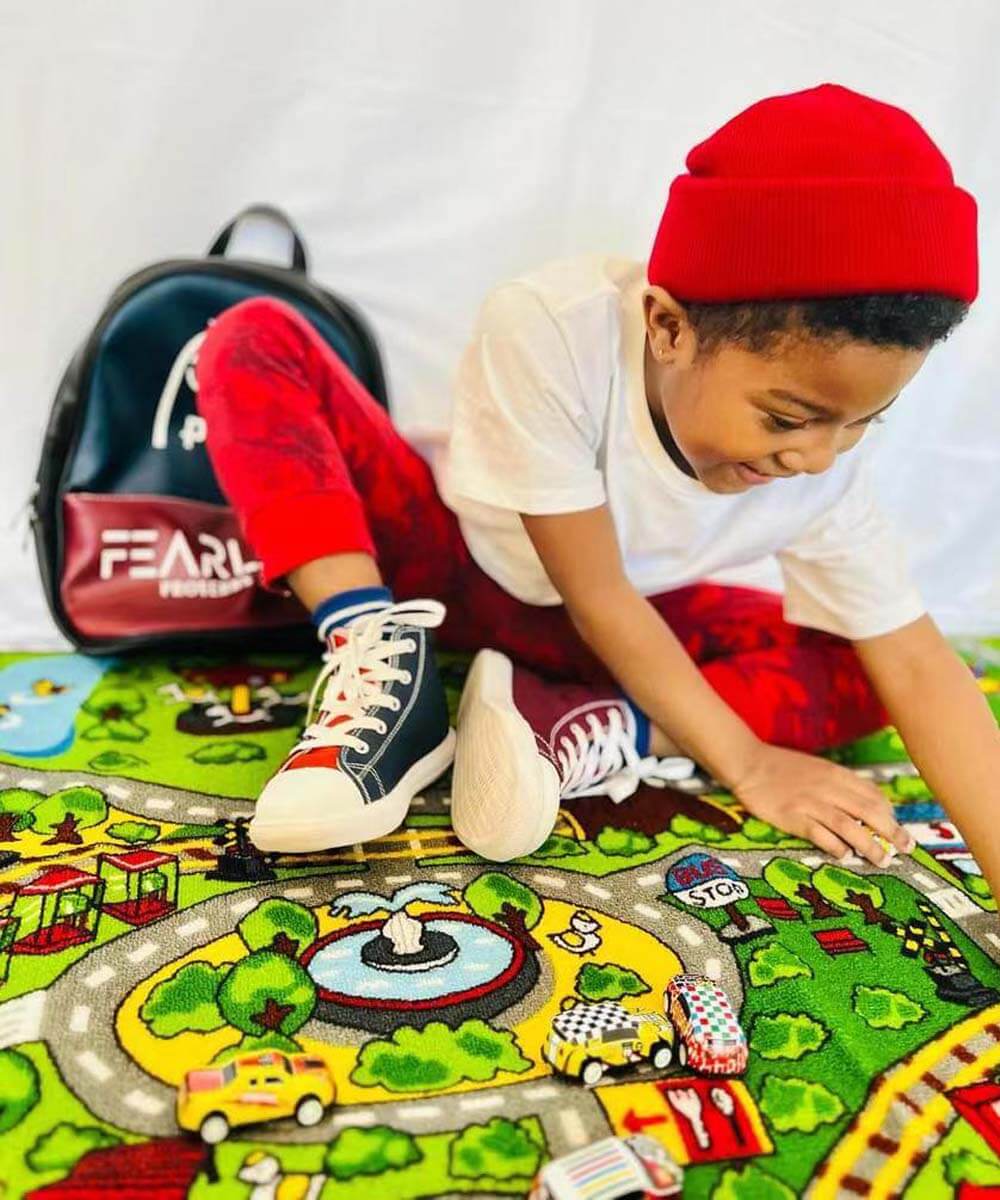G'day, home decorators and curious parents! Ever wondered why your little tackers gravitate toward certain patterns and colours in their room? Your kiddo's rug choice might be telling you more about their personality than you realize!
Why Rugs Matter More Than You Think
Let's be honest—most of us grew up with whatever carpet or flooring our parents chose. But today's little legends have options, and what they're drawn to speaks volumes about their developing minds.
"Children naturally select environments that support their developmental needs," explains Sydney-based child psychologist Dr. Amanda Chen. "Their rug preferences aren't random—they're actually quite meaningful."
The Adventure Seeker: Map & Explorer Rugs
Is your child constantly reaching for the world map rug or space-themed floor covering? You might be raising a little explorer with a curious mind and adventurous spirit!
"My son Jack was obsessed with our city road rug from age three," shares Brisbane mum Ellie Thompson. "Now he's nine and building elaborate model cities. That rug was the first sign of his engineering mind!"
Adventure-loving kids often:
- Ask "why" questions constantly
- Enjoy documentaries and non-fiction books
- Create elaborate imaginary journeys
- Show interest in different cultures and places
The Creative Soul: Abstract & Artistic Rugs
If your little one gravitates toward swirling patterns, rainbow colours, or artistic designs, you might be nurturing the next Archibald Prize winner!
"My daughter insisted on the most colourful, abstract rainbow rug we could find," laughs Melbourne dad Tim O'Connor. "Her room looks like a paint factory explosion, but her art teacher says she has exceptional colour theory intuition!"
Creative kids typically:
- Enjoy open-ended play
- Express emotions through art and music
- Notice small details others miss
- Create stories about everyday objects
The Orderly Organizer: Geometric & Pattern Rugs
Does your child prefer geometric patterns, grids, or clearly defined spaces on their rug? You might have a natural organizer who thrives on structure and order.
Perth teacher Sarah Williams notes, "In our kindergarten, the kids who gravitate toward the alphabet grid rug during free play often show early reading readiness and strong classification skills."
Orderly kids commonly:
- Arrange toys by size, colour, or type
- Enjoy puzzles and building blocks
- Feel comfortable with routines
- Show early math aptitude
The Nature Child: Animal & Outdoor-Themed Rugs
If your little one insists on animal prints, forest scenes, or ocean motifs, you're likely raising a nature lover with a strong connection to the living world.
"My daughter refused to sleep anywhere but on her underwater rug," shares Adelaide mum Jessica Patel. "Now she's studying marine biology at uni. That childhood passion never faded!"
Nature-loving kids often:
- Collect rocks, leaves, and natural objects
- Show empathy toward animals
- Prefer outdoor play to indoor activities
- Ask questions about how things grow and live
The Sensory Seeker: Texture & Tactile Rugs
Some children are drawn to the feeling of rugs more than their appearance. If your child loves shaggy textures, raised patterns, or rugs with different tactile zones, they might be processing the world through touch.
"My son has sensory processing differences, and finding the right rug changed everything," explains Tasmanian parent Alex Nguyen. "His multi-texture rug gives him comfortable sensory input when he needs grounding."
Sensory-seeking kids typically:
- Touch everything in their environment
- May be sensitive to clothing tags or seams
- Often described as "hands-on" learners
- May seek deep pressure or movement
What If They Keep Changing Their Minds?
Fair dinkum, kids are changeable creatures! If your child wants a dinosaur rug one week and a space theme the next, don't stress. This flexibility shows adaptable thinking and developing interests.
"Children try on different identities through their environment choices," explains early childhood specialist Dr. Mark Thompson. "This experimentation is healthy and normal."
Tips for Choosing the Perfect Rug Together
Ready to decode your child's preferences? Here's how to select a rug that supports their unique personality:
- Observe before purchasing: Watch which patterns and textures your child gravitates toward in different environments
- Offer limited choices: Rather than overwhelming them with options, narrow it down to 2-3 rugs that would work in their space
- Consider practicality: Beautiful rugs that can't handle spills or rough play will cause more stress than joy
- Think long-term: Some versatile designs can grow with your child through different developmental stages
- Prioritize safety: Ensure rugs have non-slip backing and are made from non-toxic materials
Beyond Decoration: Rugs as Development Tools
The right rug doesn't just look good—it can actually support your child's development:
- Fine motor skills: Tracing patterns or following paths on rugs
- Gross motor coordination: Jumping from space to space on activity rugs
- Cognitive development: Counting, letter recognition, and pattern matching
- Social skills: Defining play spaces and encouraging cooperative games
The Bottom Line
Your child's rug preference isn't just about decoration—it's a window into their developing personality and needs. By paying attention to these preferences, you can create a space that truly supports your unique little legend.
As Queensland early learning expert Jamie Donaldson puts it: "The most nurturing environments are those that reflect the child back to themselves—spaces that say, 'I see you, I understand you, and I value what makes you special.'"
So next time your little one points excitedly at a particular rug design, listen closely—they're telling you something important about who they are and who they're becoming!








Leave a comment
This site is protected by hCaptcha and the hCaptcha Privacy Policy and Terms of Service apply.